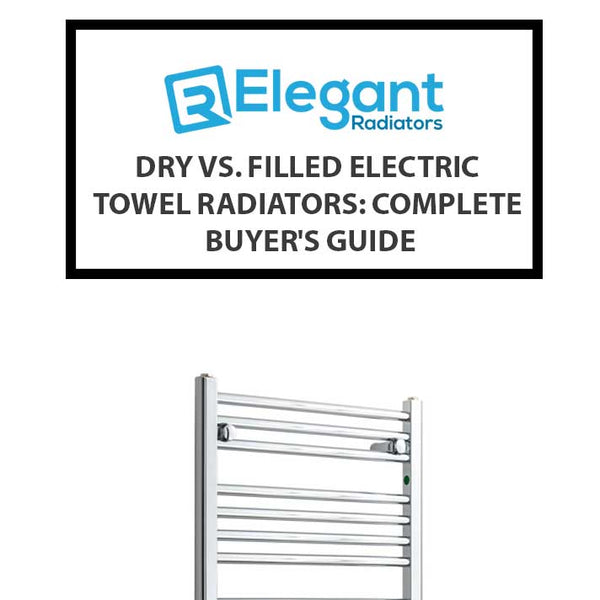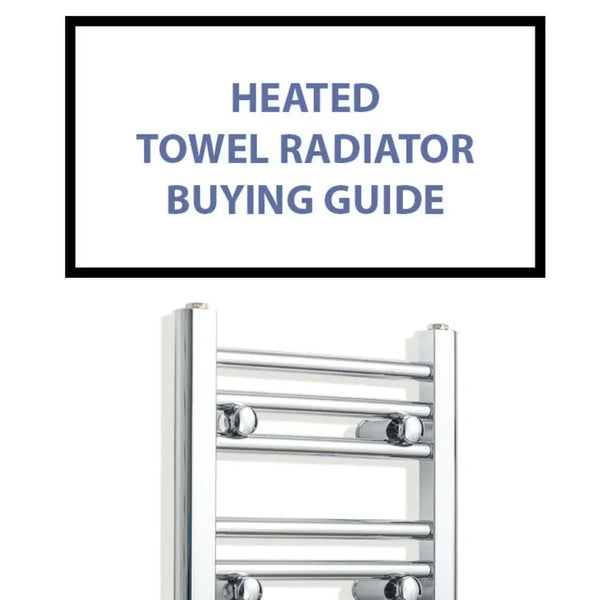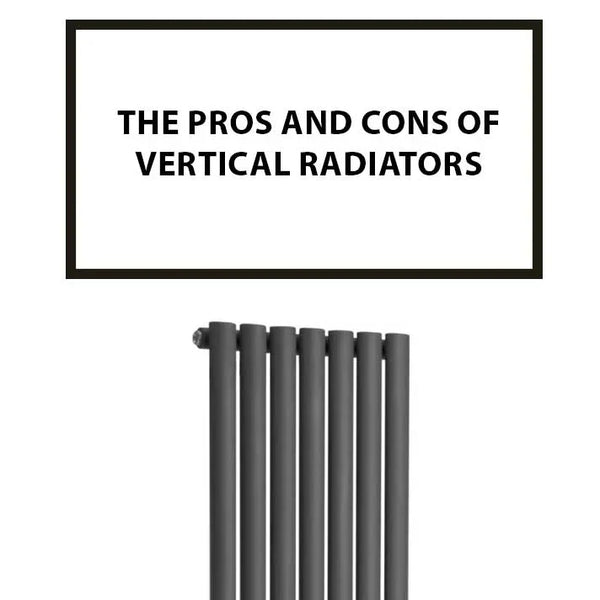Ultimate Heated Towel Rail Troubleshooting & Maintenance Guide

A heated towel rail is more than a luxury it’s a daily comfort feature that brings spa-like warmth to your bathroom. However, hidden challenges may affect its performance over time. In this guide, we dive deep into common problems, explain their underlying causes, provide actionable preventative tips and recommend products to help you maintain an efficient and stylish heated towel rail.
1. Uneven Heating
What’s Happening?
Many users notice that the upper bars of an electric towel rail are warmer than the lower ones. In hydronic models, air pockets can block the water flow, causing a similar imbalance.
Why It Happens
- Natural Convection: In electric models, heat naturally rises without the aid of a pump. This means that even when the rail is on, the lower sections may not reach the same temperature.
- Trapped Air in Hydronic Systems: Air bubbles can become lodged in the system, preventing even circulation of heated water.
In-Depth Explanation
Understanding the science of heat distribution helps in recognizing that electric towel rails rely on passive heat movement. Without active circulation, lower bars simply receive less energy. In hydronic systems, trapped air creates “dead zones” where heat transfer is inefficient.
Preventative Tips
- Regular Bleeding: Periodically bleed your hydronic system using a radiator key to release any trapped air.
- Strategic Placement: Install your rail in a well-ventilated area to encourage even heat distribution.
- Accepting Design Limitations: For electric models, know that a slight temperature variation is normal and plan your towel storage accordingly.
Product Recommendation
Consider upgrading to a model with integrated smart controls such as the Elegant Radiators Timer Built-In Fused Spur. These models not only help manage heat distribution more effectively but also enhance safety and energy efficiency.
2. Electrical Failures & Slow Heat-Up
What’s Happening?
Some heated towel rails may suddenly stop heating or take an inordinately long time to reach the desired temperature.
Why It Happens
- Wiring and Element Issues: Loose connections, voltage mismatches, or degradation of the heating element can lead to complete shutdowns.
- System Delays: Hydronic towel rails, due to their reliance on water circulation, naturally take longer to heat up compared to their electric counterparts.
In-Depth Explanation
Electrical components can wear over time. For electric models, the lifespan of heating elements (often around 1–2 years) may be shortened by constant use or faulty wiring. For hydronic systems, the delay is due to the time required for water to circulate through the system and reach a uniform temperature.
Preventative Tips
- Annual Professional Check: Have a certified electrician inspect your unit annually to catch wiring issues before they become severe.
- Regular Testing: Use a multimeter to test for continuity, especially on non-thermostatic models.
- Plan for Preheat Time: If you use a hydronic rail, consider pre-heating it during off-peak hours.
Product Recommendation
Invest in models with smart thermostats that integrate with home automation systems. Not only do these units allow remote scheduling, but they also come with diagnostic features that alert you to potential issues before they escalate.
3. High Energy Consumption
What’s Happening?
Running your heated towel rail continuously can lead to unexpectedly high energy bills.
Why It Happens
Without automation, the towel rail often stays on longer than necessary, leading to energy waste.
In-Depth Explanation
Manual operation lacks the precision of programmed scheduling. Even when towels are not in use, a continuously powered rail consumes energy inefficiently.
Preventative Tips
• Automate Your Heating: Use timers or smart thermostats to only heat your rail when needed.
• Energy-Saving Scheduling: Set your rail to activate during high-use periods (e.g., early mornings and evenings) and shut off automatically when not required.
Product Recommendation
The Elegant Radiators Timer Built-In Fused Spur is an excellent option. With built-in scheduling features, it can reduce energy use by over 30% while ensuring your towels are always ready when you need them.
4. Corrosion and Rust
What’s Happening?
Over time, you might notice reddish-brown spots or flaking on your heated towel rail.
Why It Happens
- Condensation: In the moist environment of a bathroom, condensation can form on cooler sections of the rail, leading to rust.
- Dust and Debris: Particulates trapped on the surface can retain moisture and accelerate corrosion.
In-Depth Explanation
Corrosion is a chemical process where metal reacts with water and oxygen. In bathrooms, the combination of steam, condensation, and dust creates a perfect environment for rust to develop, particularly on lower-quality finishes or materials that are prone to oxidation.
Preventative Tips
- Routine Cleaning: Wipe down your rail weekly with a soft, dry cloth to remove dust and moisture.
- Consistent Operation: Running the rail intermittently can help reduce condensation buildup.
- Use Inhibitor Fluids: In hydronic systems, add corrosion inhibitors annually to protect internal components.
- Material Matters: Opt for stainless steel or specially coated finishes that resist rust rather than chrome plating, which may wear down over time.
Product Recommendation
For those seeking durability, consider models made from high-quality stainless steel. While specific product names may vary by market, look for reviews highlighting corrosion resistance and long-term performance.
5. Design and Installation Challenges
What’s Happening?
Not every heated towel rail fits perfectly into every bathroom. Sometimes the rail’s design or installation requirements can be a deal-breaker.
Why It Happens
- Size and Output Mismatch: In many cases, the rail might be too small to effectively heat the entire bathroom, especially when it doubles as a towel storage unit.
- Installation Constraints: Wall-mounted models require precise placement and often professional installation due to hidden plumbing and electrical work.
In-Depth Explanation
Calculating the correct BTU (British Thermal Unit) for your bathroom is essential. An undersized rail will not generate enough heat, while an oversized one may be difficult to install or maintain. In small spaces, a bulky wall-mounted rail can disrupt both aesthetics and functionality.
Preventative Tips
- Professional Assessment: Consult with a bathroom specialist to determine the optimal size and type of rail based on your room dimensions, insulation, and layout.
- Flexible Options: If your bathroom is small, consider freestanding or plug-in models that offer greater flexibility and easier repositioning.
- Plan Your Layout: Map out your installation area to avoid conflicts with other fixtures and to ensure easy access for maintenance.
Frequently Asked Questions (FAQ)
Q: How long do heated towel rails typically last?
A: With proper maintenance, a high-quality heated towel rail can last anywhere from 10 to 20 years. Regular inspections and cleaning play a crucial role in extending its lifespan.
Q: Can I attempt electrical repairs myself?
A: It’s best to leave electrical repairs to certified professionals. Faulty wiring or improper fixes can pose serious safety risks.
Q: Do timers and smart thermostats work with all models?
A: Most modern electric models are compatible with timers and smart controls. For hydronic systems, check with the manufacturer’s guidelines to ensure compatibility.
Q: What’s the best material to avoid rust?
A: Stainless steel is typically the best option due to its natural corrosion resistance. Avoid finishes that wear down over time such as chrome plating.
Quick Maintenance & Prevention Tips
- Bleed Regularly: Prevent airlocks in hydronic systems by bleeding your rail seasonally.
- Schedule Inspections: Have a certified electrician inspect the unit annually.
- Clean Weekly: Wipe away dust and moisture to prevent corrosion.
- Automate Heating: Use timers or smart thermostats to optimize energy usage.
- Plan Installation: Consult experts to ensure proper sizing and placement in your bathroom.







